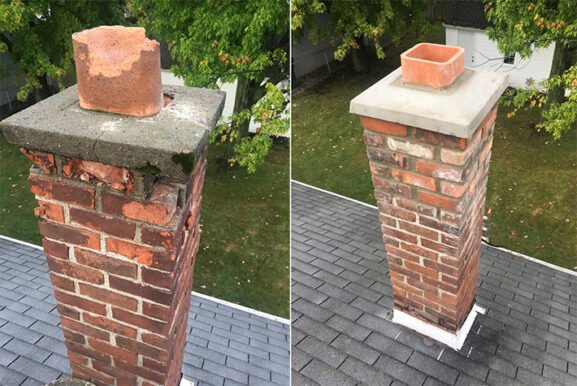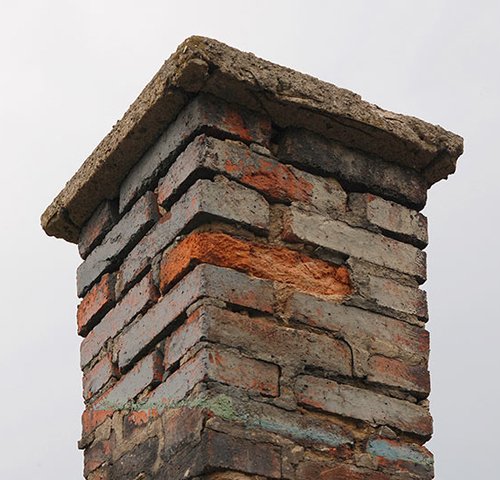Why It’s Critical to Address Flashing on Chimney Repair Before Bigger Problems Begin
Key Takeaways
- Damaged or missing flashing on chimney is a common cause of roof leaks and interior water damage.
- Early repairs prevent long-term structural deterioration around the chimney and roofing system.
- Professional assessment ensures proper sealing with materials that match your roof and chimney type.
- Regular inspections help catch flashing issues early, reducing repair costs and preventing mold or rot.
Understanding What Flashing Does on a Chimney
Flashing on a chimney is a protective layer, usually made of metal, that seals the space where the chimney meets the roof. Its primary job is to keep water from seeping into your home. When installed properly, flashing directs rainwater away from the joint where the roof and chimney intersect. Without it—or if the flashing becomes damaged—water can trickle into the attic, ceilings, or walls, causing stains, mold growth, and wood rot over time.
This might sound like a minor issue at first, but flashing problems are often the unseen trigger behind major leaks. Homeowners often misdiagnose a roof leak when the actual culprit is degraded or missing chimney flashing.
Signs That Your Chimney Flashing Needs Repair
Flashing doesn’t last forever, especially in regions that experience harsh winters or heavy rainfall. Common signs of flashing issues include water stains on ceilings near the chimney, a musty smell in the attic, rusted flashing visible from the roof, or even chunks of mortar crumbling near the chimney base.
In more severe cases, you might notice water actively dripping during rainstorms. That’s a signal the flashing has completely failed or shifted. Since these signs often mimic other types of roof damage, it’s important to have a professional inspection rather than relying on guesswork.
Why Flashing Fails and What Causes It
Flashing failure is typically caused by one of three things: poor installation, aging materials, or weather-related damage. Improperly installed flashing might lack the step-flashing design needed to follow the roof’s slope. Over time, even properly installed flashing can corrode or lift, especially if exposed to repeated freeze-thaw cycles.
Another frequent issue is settling of the house, which can cause cracks where the flashing was once sealed tight. Also, roofing jobs done in a rush often reuse old flashing, assuming it’s still in good shape. That shortcut often leads to new leaks shortly after a roof replacement.
Types of Chimney Flashing Used in Repairs
There are several types of chimney flashing, and knowing which one your chimney needs is essential for long-term performance.
Step flashing is layered in sections and follows the slope of the roof. It works best for sloped rooflines and is typically made from galvanized steel or aluminum.
Counter flashing is embedded into the brick mortar joints and folds down over the step flashing, creating a two-layer seal.
Base flashing is placed at the bottom edge of the chimney and acts as the foundation for the other pieces.
Some modern repairs may use high-performance materials like copper or lead-coated metal, both of which are more durable and corrosion-resistant than basic galvanized steel.
Matching the flashing material to the local climate and roofing type makes a significant difference in how well the repair holds up.
How Professionals Repair Chimney Flashing
Chimney flashing repair is more than just patching metal. A thorough professional repair includes removing old flashing, inspecting the surrounding roof and chimney area, resealing mortar joints if necessary, and installing new flashing using appropriate materials.
The new flashing must be shaped and sealed precisely to the contours of both the chimney and roofline. High-quality sealants are used to lock out moisture, and the joints are tested for proper drainage. Skipping any of these steps can leave your chimney vulnerable to leaks again.
If you’re curious about the technical aspects, the International Association of Certified Home Inspectors (InterNACHI) offers detailed guidelines on chimney flashing standards that professionals often follow.
Common Mistakes to Avoid When Addressing Flashing Issues
One major mistake is assuming caulking will fix everything. While sealants can temporarily reduce leaks, they’re not a long-term solution. Flashing must be physically sound and properly layered for lasting protection. Another mistake is patching over damaged flashing without inspecting the chimney’s base or brickwork.
Sometimes, problems go deeper than just the flashing itself—like cracked chimney crowns or spalled bricks—which also allow water in. In these cases, flashing repair should be part of a broader chimney maintenance plan rather than treated as a stand-alone task.
The Role of Seasonal Weather in Flashing Wear
Flashing repair is particularly important in places with extreme seasonal changes. During winter, freeze-thaw cycles can cause expansion and contraction in the materials, which stresses both the flashing and the chimney structure. In spring and summer, heavy rainfall tests the waterproofing ability of your roof system.
If flashing has already begun to deteriorate, this weather cycle accelerates damage, especially in areas like the Northeast, where winter storms and summer downpours are both frequent. By proactively repairing flashing before storm seasons, you minimize the risk of emergency leaks and costly interior damage.
Preventing Future Flashing Problems with Regular Inspections
The best way to prevent recurring flashing issues is through routine roof and chimney inspections. A qualified inspector can spot early warning signs like rust, cracks, or loosened flashing and recommend small repairs before major fixes are needed.
Annual inspections are especially useful after major weather events or when buying or selling a home. Professionals can also suggest upgrades, such as using more durable flashing materials or reinforcing chimney mortar if needed.
Homeowners often forget that flashing is part of the broader roofing system. Keeping it maintained adds years to the life of your roof and protects your home’s interior from water damage that might otherwise go unnoticed until it’s too late.
Final Thoughts on Maintaining a Durable Chimney and Roof Connection
Addressing chimney flashing repair isn’t just about stopping leaks—it’s about protecting your home’s structural integrity from top to bottom. Flashing may seem like a small component, but it plays a big role in defending your roofline from water damage. Prioritizing this repair not only prevents costly surprises but also extends the life of your chimney and roof.
By working with qualified professionals and staying proactive with inspections, you can keep your home dry and secure year-round.

